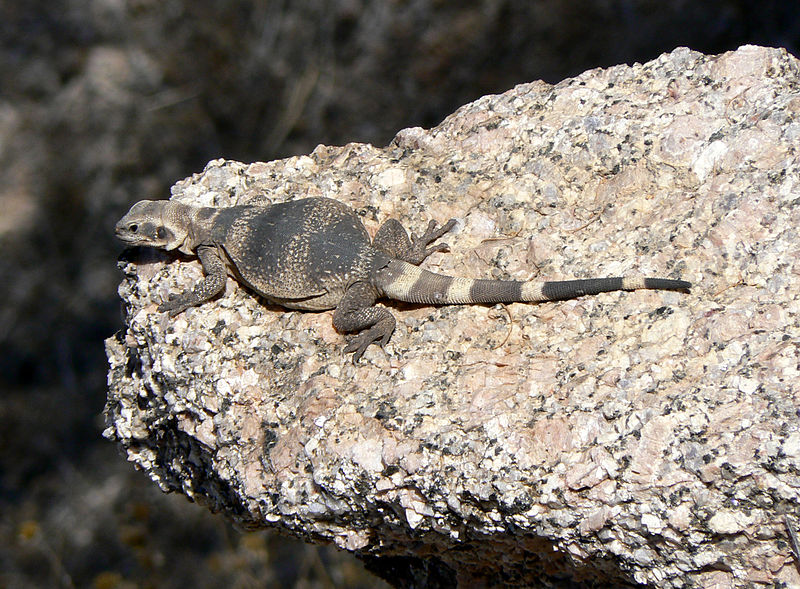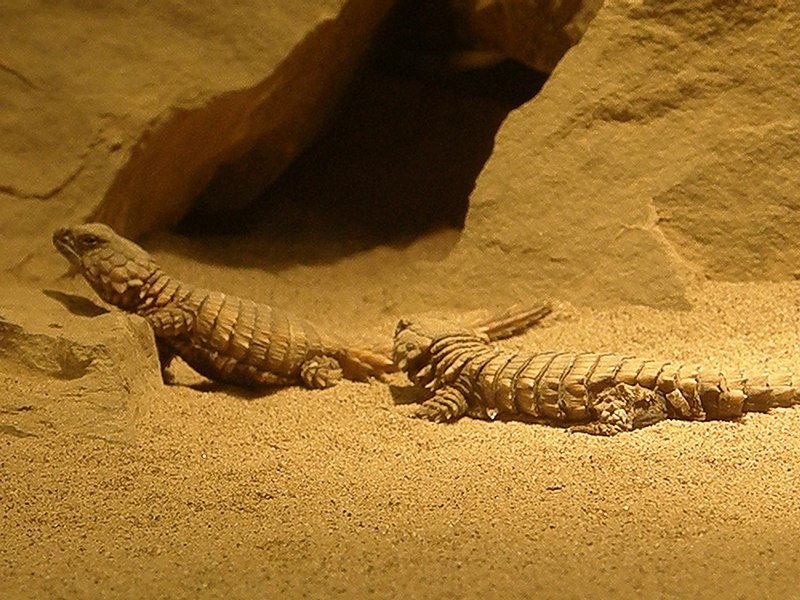 The Leopard Gecko (Eublepharis macularius), a pet trade staple, is sometimes promoted as an easy-to-keep “starter-lizard” that requires little more than heat and some vitamin-powdered crickets. Those who follow this advice may keep their pet alive for a few years, and may even feel satisfied that they have provided it with a good life…similar to the mentality that doomed millions of Red-Eared Sliders to early deaths years ago. However, the Leopard Gecko’s captive lifespan should be measured in decades, not years – animals in their teens are common, and the record-breaker exceeds 30 years of age. Following are some tips to help you provide the best possible diet for your pet. Read More »
The Leopard Gecko (Eublepharis macularius), a pet trade staple, is sometimes promoted as an easy-to-keep “starter-lizard” that requires little more than heat and some vitamin-powdered crickets. Those who follow this advice may keep their pet alive for a few years, and may even feel satisfied that they have provided it with a good life…similar to the mentality that doomed millions of Red-Eared Sliders to early deaths years ago. However, the Leopard Gecko’s captive lifespan should be measured in decades, not years – animals in their teens are common, and the record-breaker exceeds 30 years of age. Following are some tips to help you provide the best possible diet for your pet. Read More »
Category Archives: Lizards
Feed SubscriptionThe Chuckwalla – a Hardy, Personable Candidate for the Desert Terrarium – Part 2
 Please see Part I of this article for more on the natural history of North America’s second largest lizard, the Chuckwalla (Sauromalus obesus).
Please see Part I of this article for more on the natural history of North America’s second largest lizard, the Chuckwalla (Sauromalus obesus).
Status in the Wild
Population levels appear stable as their preferred habitat is largely unsuitable for development. The species S. varius, however, is limited in distribution to 3 islands in the Gulf of California and is listed on CITES Appendix I. Read More »
Breeding the Green Iguana – Indoor and Outdoor Nest Sites – Part 1
Those of you with a mature pair of Green Iguanas (Iguana iguana) may expect to see courtship behavior in February/March (Note: males may become aggressive at this time, please see article below). While these huge lizards can be quite a handful, captive breeding is a worthwhile experience that you’ll not soon forget.
If not provided a suitable nesting site, gravid females may retain their eggs, which can lead to serious illness and death. Having a suitable area to deposit eggs is thus critical to both good health and breeding success. Read More »
The Chuckwalla – a Hardy, Personable Candidate for the Desert Terrarium – Part 1
 The stocky Chuckwalla (Sauromalus obesus) is one of my all-time favorite lizards. Years ago, I and others found it a quite difficult captive, as little was known of its high UVB requirements. Today, however, its husbandry is well-understood, and captive bred animals are readily available.
The stocky Chuckwalla (Sauromalus obesus) is one of my all-time favorite lizards. Years ago, I and others found it a quite difficult captive, as little was known of its high UVB requirements. Today, however, its husbandry is well-understood, and captive bred animals are readily available.
Food and hot basking sites are the focal points of the Chuckwalla’s life – provide it with each in proper form and you’ll find yourself with a most responsive and interesting pet. Most take quickly to hand feeding, and their vegetable-dominated diet is a plus for many herp enthusiasts. Read More »
Breeding the Tropical Girdled Lizard or Forest Armadillo Lizard – Part 2
In Part I of this article we discussed the care of the Tropical Girdled Lizard (Cordylus tropidosternum), one of the most commonly available of the 37 interesting species in the genus Cordylus (among the Girdled Lizard’s relatives is the much sought-after Armadillo Lizard, C. cataphractus, see photo). Also known as the East African Spiny-tailed Lizard, its unique appearance and behaviors are quite captivating. Today we’ll cover captive reproduction in more detail.
Temperature Fluctuations in Nature and Captivity
 In their native South Africa, Tropical Girdled Lizards hibernate during the winter, and a cooling off period was believed necessary to induce captive reproduction. Good results are usually achieved after captives have been held at temperatures of 58-60 F for 4-6 weeks. During this time they move about a bit, and drink, but do not feed.
In their native South Africa, Tropical Girdled Lizards hibernate during the winter, and a cooling off period was believed necessary to induce captive reproduction. Good results are usually achieved after captives have been held at temperatures of 58-60 F for 4-6 weeks. During this time they move about a bit, and drink, but do not feed.
However, I’ve recently received reports of captive births (females bear 1-4 large, well-developed youngsters) among lizards subjected to little if any change in temperature. In some situations, normal seasonal fluctuations in the temperature of the room in which the lizards are held seems to be enough to stimulate reproduction.
Reproduction Without a Traditional “Winter”
In the most recent breeding of which I’ve been informed, births occurred in a terrarium maintained at an ambient of 77 F with a basking site of 95 F. The room in which the terrarium was located was heated during the winter and air conditioned during the summer, which may have “switched seasons” on the lizards, but they bred none-the-less.
In another situation, the terrarium was in a room maintained at approximately 75 F year-round, but, being near a window, may have been subjected to the effects of outdoor temperatures.
Caring for Youngsters – UVB Light
Tropical Girdled Lizards seem to form loosely connected colonies in the wild; captives usually fare well in groups, but dominant individuals sometimes prevent others from feeding and basking.
Young lizards should have access to UVB light. However, they are quite shy, and may not bask often, especially if adults are present. Also, they tend not to climb to the top of rock piles and such when basking, preferring to remain at or close to the terrarium’s floor – at which point they may be too far from the bulb to obtain adequate UVB exposure. Therefore, newborns are best removed to shallow enclosures, in order to maximize UVB exposure (they should be able to bask within 6-12 inches of florescent UVB bulbs).
Useful UVB and UVA Lamps (Bulbs)
A Zoo Med 10.0 UVB bulb positioned within 6 to 8 inches of the basking site, is ideal. Mercury vapor bulbs can be used in situations where the basking site cannot be positioned within 12 inches of the bulb.
A source of UVA light, while perhaps not critical for survival, will help to encourage natural behaviors and reproduction.
Further Reading
Recently I have helped to set up new reptile and amphibian exhibit areas for The Maritime Aquarium in Norwalk, CT (long known for its excellent collection of native marine life), and was happy to learn that Girdled Lizards have reproduced there (off exhibit).
A listing of all 37 Cordylus species, along with range and other information, is posted here.
While the role of UVB light in reptile care is well-understood, we know less about UVA. For some thoughts and observations, please see Providing UVA to Reptiles and Amphibians.
Armadillo Girdle tailed Lizard image referenced from wikipedia and originally posted by Ltshears from flickr and Frank Wouters
 That Reptile Blog – Reptile, Amphibian and Exotic Pet Care and Information
That Reptile Blog – Reptile, Amphibian and Exotic Pet Care and Information
